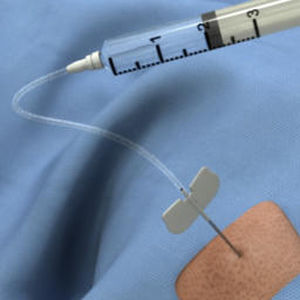
- Products
- Catalogs
- News & Trends
- Exhibitions
Clinical iOS application Ventricular Shunt Taptrainingsimulationfor smartphones

Add to favorites
Compare this product
Characteristics
- Applications
- clinical
- Function
- training, simulation
- Deployment mode
- for smartphones, for tablet PC
Description
Background
The cerebral shunt functions to shunt the cerebrospinal fluid (CSF) from the ventricles of the brain to treat conditions such as hydrocephalus which are due to excessive fluid accumulation in the ventricles. The shunt can be tapped or CSF aspirated for infection screening and to ascertain that the shunt is still functioning. It can also be done for therapeutic relief of raised intracranial pressure (ICP) symptoms by removing excessive fluid. In most cases, a blocked and malfunctioning shunt is due to infection; hence, it is important to send a CSF sample for investigation to rule out any source of shunt-related infection. Clinical presentation of a malfunctioning shunt are headaches with nausea and vomiting, mood or personality changes, irritability and reduced cognitive performance. Blood investigations and radiological imaging, such as MRI and CT scans, can also be used to rule out possible infection and to investigate any increase in ventricular size.
Key Objectives
• Patient preparation.
• Access the shunt reservoir.
• Opening intracranial pressure assessment.
• Aspiration of cerebrospinal fluid.
• Closing intracranial pressure assessment.
• Closure.
Key Anatomy
The tapping of the shunt is dependent to the site of the blockage and the type of hydrocephalus.
*Prices are pre-tax. They exclude delivery charges and customs duties and do not include additional charges for installation or activation options. Prices are indicative only and may vary by country, with changes to the cost of raw materials and exchange rates.



